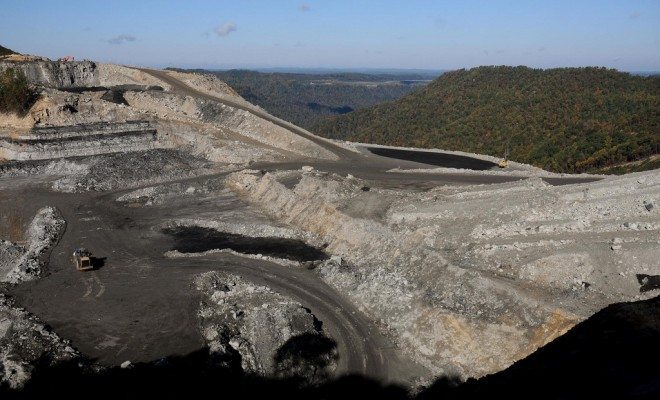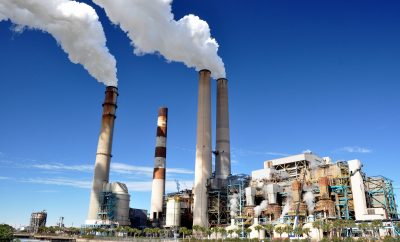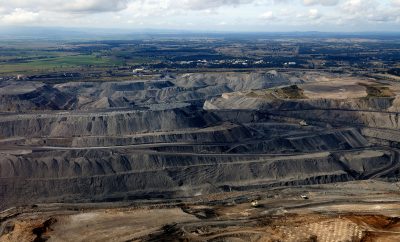 Image courtesy of [James Holloway via Flickr]
Image courtesy of [James Holloway via Flickr]
Energy and Environment
Mountain Top Removal Threatens Environmental and Human Welfare
The Appalachians, one of the world’s oldest mountain ranges, might be gone forever sooner than we expect. It is not erosion or tectonic activity that will be the culprit, but human action.
Mountain Top Removal (MTR) is a mining process wherein literally the top of a mountain is blasted apart so as to access the coal that resides within. This is a more efficient process than the older underground mining style, requiring fewer men, less time, and resulting in higher yields. However, it inflicts catastrophic damage to the surrounding ecosystems as well as the people who live in the region. Whether it be for human health, biological diversity, or aesthetics, MTR has been the subject of an intensifying debate over the last few decades.
One of the most immediate problems caused by Mountain Top Removal is damage to rivers and contamination of water supplies. When the peaks are blown apart, many tons of rock, minerals, and sediment packed with metal materials fall into the water. In some cases, this has buried streams entirely. Often it chokes the flow of the waterway, and as journalist Eric Reece detailed, changes the chemistry of the water. This causes many fish, larvae, and other aquatic life to die. Furthermore, these contaminants find their way into the human water supply. There have been reports of contaminated wells and illnesses attributed to drinking fouled water.
Companies have sought to promote feigned silver linings in their actions. One corporation operating in Eastern Kentucky asserted that its actions, which cleared the landscape and opened up space, were in fact beneficial to the elk population there. It claims that it is an ideal habitat for “free ranging elk” whose grazing keep deer in check and maintain a balance of biodiversity in the ecosystem. This is an intentional misinformation campaign. Conservation biologists have argued to the contrary, detailing the requirements for a healthy elk population and the complicating factors of a healthy ecosystem, the vital interconnected set of relationships of which have been removed by clear cutting and a landscape thrown out of balance.
In addition to these micro-environmental concerns, there may be macro ones as well. Mountain ranges have substantial influence over weather patterns. The air barriers created by the Himalayas and Andes are vital to the thriving diversity of the rainforests in Indochina and the Amazon, respectively. Although the Appalachians do not reach such soaring heights, there is no reason to doubt that their presence as a substantial topographic feature plays into the interconnectedness and complexity of the environments there.
Most of the issues elucidated so far deal with scientifically motivated concerns; there are sociological ones as well. Many local proponents of MTR cite the Bible, wherein God said to subdue the Earth. God put the mountains there for us to mine, they argue. It is a fulfillment of our place as the favored species and rulers of the planet to do so. On the contrary, others assume a stance that God put the mountains there for us to admire. They serve a purpose of spiritual fulfillment and self betterment, and to destroy them is sacrilegious. Reece, who spent a long time in Kentucky delving into this issue referenced a local clergyman who took a middle ground on this debate. He suggested that these passages intend to promote “stewardship.” Human-environmental interactions should be balanced and reciprocal; each needs the other. Clearly, discourses of this nature can be recast so as to be appropriated toward any camp’s objectives.
Religion aside, many proponents of the practice reference the practical benefits of mountain top removal. It provides many jobs and figures substantially into the export economy of a region with a relatively low standard of living and median income. These arguments do not hold water when held under scrutiny. The towns themselves do not see much financial benefit, as profits go to the companies and the wealthy elite. Furthermore, reminiscent of fracking, the process of mountain top removal requires specialized training that is carried out by company employees brought in from the outside. The industry does not provide many jobs for local residents. In fact, there have been cases of companies buying up locals’ land, inflicting damage, then going bankrupt before distributing compensation. In this sense they impart direct harm on the people’s livelihoods.
Why is there such willingness to throw a large group of people under the bus? The term “sacrifice zone” refers to a geographic region that is used as either a physical dumping ground or a section that is allowed to degenerate in consequence of industrial and developmental activity intended for the benefit of other regions. The environment and people who live in a sacrifice zone suffer greatly. In her insightful book Removing Mountains: Extracting Nature and Identity in the Appalachian Coalfields, sociologist Rebecca R. Scott addresses shifting and contradictory ideas about the people of Appalachia in history and modernity, and their relationship to the physical environment. In some cases the people are portrayed as descendants of the British; they are an idealization of rural, innocent, white Americanness. More commonly, she argues, they are portrayed as backwards, uneducated, vile, violent, white trash. These two divergent concepts are appropriated depending on the agenda at hand. Scott provides as an example the efforts to bring home prisoner of war Jessica Lynch from Iraq. Here, the former dialogue was brought into play. It evoked sympathy and aroused humanizing emotion in favor of her return. Scott provides many perceptive revelations, but suffice it to say that the latter discourse is more common and convenient when promoting the actions of mountain top removers. It establishes all of Appalachia as a sacrifice zone for the coal industry.
Ultimately, massive human and environmental damage is being inflicted in quest of a fuel source that is less and less preferable anyway. Although it has been around since the 1960s, mountain top removal has been on the rise in the last twenty years. Resulting problems are increasing, while the benefits are short lived and the consequences are long term. The quality of our bodies and ideas about our identities are just as tightly intertwined with our environments are are wildlife and waterways. Alternatives to the process, and alternatives to the coal, are vital.









Comments